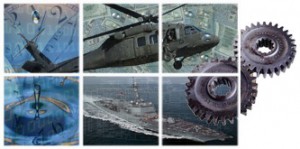The XFMR solutions concept allows for interactive critical chain re-sequencing, constraint violation identification, and automated critical chain plan option generation. These capabilities are transforming Air Logistics Center (ALC) operations to warrior-centric, highly adaptive, and more efficient sustainment enterprise activities.
The Transformation in Maintenance and Repair (XFMR, or “transformer”) research effort identified the critical method and tool technology voids that must be addressed in transforming Air Logistics Center (ALC) operations to warrior-centric, highly adaptive, and more efficient sustainment enterprise activities. Central to addressing these voids is a set of key technologies that support a critical chain program management (CCPM) approach based on Goldratt’s Theory of Constraints (TOC). The XFMR solution concept includes a set of Critical Chain deconfliction tools that provide critical chain re-sequencing, constraint violation identification, and automated and optimized critical chain plan option generation.
Phase II Development
In Phase II of the project, KBSI augmented the XFMR capabilities using innovative, web-based status capture and visualization tools aimed at dispelling the “fog of maintenance.” These tools include knowledge network discovery and applications, status and constraint data capture, and user-friendly, ad hoc query and summarization support for production management.
 Together these elements target key shortcomings and provide the methods and technology needed to dramatically improve the capture of key shop floor events, status, and constraint knowledge; to revise production plans, schedules, and resource requirements forecasts in response to changing requirements and inherent depot sustainment operations variability; and to streamline the information management and communication process between shop floor personnel and production management. These innovations greatly improve the ability of ALCs to deliver warfighter systems on time and on budget.
Together these elements target key shortcomings and provide the methods and technology needed to dramatically improve the capture of key shop floor events, status, and constraint knowledge; to revise production plans, schedules, and resource requirements forecasts in response to changing requirements and inherent depot sustainment operations variability; and to streamline the information management and communication process between shop floor personnel and production management. These innovations greatly improve the ability of ALCs to deliver warfighter systems on time and on budget.
This material is based upon work supported by the United States Air Force under Contract No. FA8103-05-C-0174. Any opinions, findings and conclusions or recommendations expressed in this material are those of the author(s) and do not necessarily reflect the views of the United States Air Force.
